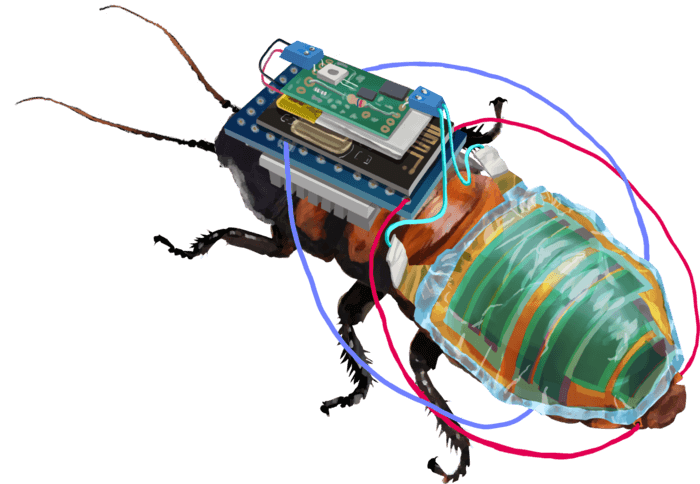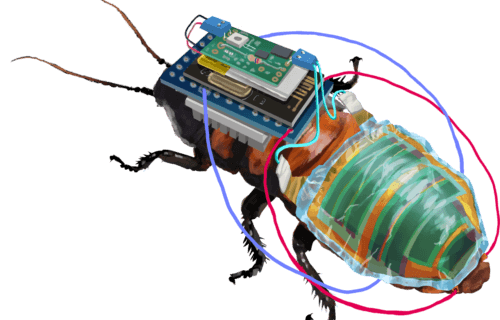TOKYO, Japan — A cyborg cockroach with an ultra-thin, solar-powered battery could help humans inspect and monitor hazardous areas of the environment. Scientists in Japan say these real insects are under the control of a solar-powered wireless module with a rechargeable battery and they can move freely because of the backpack’s ultrathin electronics and flexible materials.
Researchers from the RIKEN Cluster for Pioneering Research (CPR) note their work builds on the development of cyborg insects by skipping the need to charge them using a docking station, which would cost valuable time. They add that to make the use of cyborg insects worthwhile, they have to be able to control the cyborgs for long periods of time and a solar cell means the battery will stay continuously charged.
Publishing their work in the journal npj Flexible Electronics, the team experimented by attaching a special backpack with a 0.004-millimeter-thick organic solar cell module onto the back of six-centimeter-long Madagascar cockroaches.
“The body-mounted ultrathin organic solar cell module achieves a power output of 17.2 mW, which is more than 50 times larger than the power output of current state-of-the art energy harvesting devices on living insects,” says Dr. Kenjiro Fukuda of REKIN CPR, in a media release.

Scientists had to make a backpack that’s easy to move around in
The 3D printed backpack also contains a wireless leg-control module and lithium polymer battery that fits perfectly along the curved surface of a cockroach, allowing it to sit stably on the thorax for more than a month.
Researchers say the ultrathin and flexible organic solar cell, and how they attached it, proved necessary to ensure the insect’s freedom of movement. They realized that the abdomen changes shape and portions of the exoskeleton overlap. To accommodate this, they interleaved adhesive and non-adhesive sections onto the films which meant they could bend while remaining attached.
When the team tested the thicker solar cell films or when they uniformly attached the cells, the cockroaches took twice as long to run the same distance and struggled to right themselves when they flipped their backs.
Testing revealed that once the researchers installed the backpack and the cells charged for 30 minutes using pseudo-sunlight, they were able to make the animals move left and right using a wireless remote control.
“Considering the deformation of the thorax and abdomen during basic locomotion, a hybrid electronic system of rigid and flexible elements in the thorax and ultrasoft devices in the abdomen appears to be an effective design for cyborg cockroaches,” Fukuda concludes.
“Moreover, since abdominal deformation is not unique to cockroaches, our strategy can be adapted to other insects like beetles, or perhaps even flying insects like cicadas in the future.”
South West News Service writer Danny Halpin contributed to this report.
